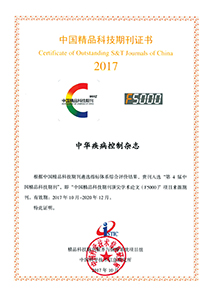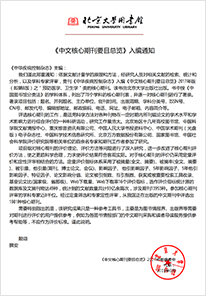2017 Vol. 21, No. 7
Display Method:
2017, 21(7): 647-649,674.
doi: 10.16462/j.cnki.zhjbkz.2017.07.001
Abstract:
2017, 21(7): 650-654.
doi: 10.16462/j.cnki.zhjbkz.2017.07.002
Abstract:
2017, 21(7): 655-659.
doi: 10.16462/j.cnki.zhjbkz.2017.07.003
Abstract:
2017, 21(7): 660-664.
doi: 10.16462/j.cnki.zhjbkz.2017.07.004
Abstract:
2017, 21(7): 665-669.
doi: 10.16462/j.cnki.zhjbkz.2017.07.005
Abstract:
2017, 21(7): 670-674.
doi: 10.16462/j.cnki.zhjbkz.2017.07.006
Abstract:
2017, 21(7): 675-678.
doi: 10.16462/j.cnki.zhjbkz.2017.07.007
Abstract:
2017, 21(7): 679-683.
doi: 10.16462/j.cnki.zhjbkz.2017.07.008
Abstract:
2017, 21(7): 684-687,692.
doi: 10.16462/j.cnki.zhjbkz.2017.07.009
Abstract:
2017, 21(7): 688-692.
doi: 10.16462/j.cnki.zhjbkz.2017.07.010
Abstract:
2017, 21(7): 693-697.
doi: 10.16462/j.cnki.zhjbkz.2017.07.011
Abstract:
2017, 21(7): 698-701,736.
doi: 10.16462/j.cnki.zhjbkz.2017.07.012
Abstract:
2017, 21(7): 702-705.
doi: 10.16462/j.cnki.zhjbkz.2017.07.013
Abstract:
2017, 21(7): 706-709.
doi: 10.16462/j.cnki.zhjbkz.2017.07.014
Abstract:
2017, 21(7): 710-713.
doi: 10.16462/j.cnki.zhjbkz.2017.07.015
Abstract:
2017, 21(7): 714-717.
doi: 10.16462/j.cnki.zhjbkz.2017.07.016
Abstract:
2017, 21(7): 718-722.
doi: 10.16462/j.cnki.zhjbkz.2017.07.017
Abstract:
2017, 21(7): 723-726.
doi: 10.16462/j.cnki.zhjbkz.2017.07.018
Abstract:
2017, 21(7): 727-731.
doi: 10.16462/j.cnki.zhjbkz.2017.07.019
Abstract:
2017, 21(7): 732-736.
doi: 10.16462/j.cnki.zhjbkz.2017.07.020
Abstract:
2017, 21(7): 737-740,745.
doi: 10.16462/j.cnki.zhjbkz.2017.07.021
Abstract:
2017, 21(7): 741-745.
doi: 10.16462/j.cnki.zhjbkz.2017.07.022
Abstract:
2017, 21(7): 746-748.
doi: 10.16462/j.cnki.zhjbkz.2017.07.023
Abstract:
2017, 21(7): 749-751,754.
doi: 10.16462/j.cnki.zhjbkz.2017.07.024
Abstract:
2017, 21(7): 752-754.
doi: 10.16462/j.cnki.zhjbkz.2017.07.025
Abstract:


 Email alert
Email alert RSS
RSS Abstract
Abstract PDF
PDF





